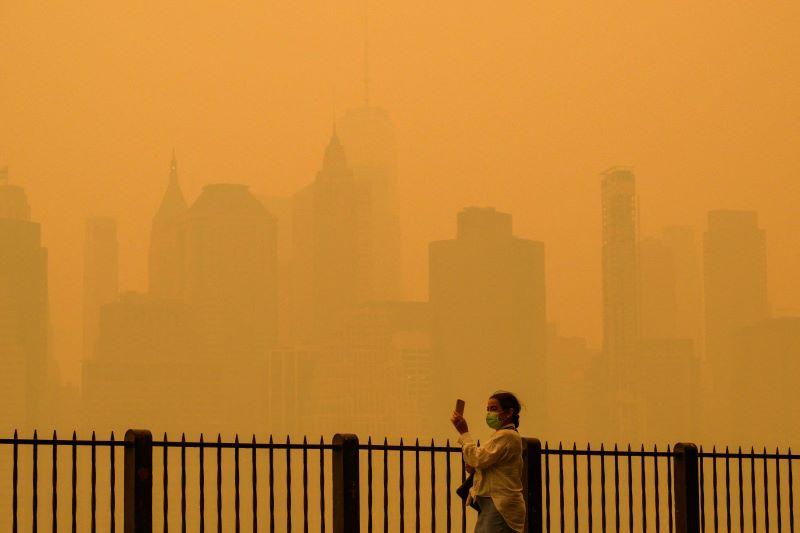
Smoke generated from Canadian wildfires has slowed or paused air traffic in portions of the U.S. northeast, as it drifts south in quantities large enough to impact visibility.
By the afternoon of June 7, the U.S. FAA had modified operations at New York LaGuardia, Newark Liberty, and Philadelphia international airports. “All flights bound for LaGuardia International Airport have been paused and departures have been slowed,” FAA said in a statement at 2 p.m. ET. “Flights to Newark Liberty International Airport have been slowed.”
Roughly one hour later the FAA confirmed it was also slowing traffic bound for Philadelphia from the U.S. East Coast and Midwest, due to the reduced visibility.
The agency noted it “will continue to adjust the volume of traffic to account for the rapidly changing conditions.”
Canada’s wildfires are spread out across its provinces, with a large concentration currently in the province of Quebec. In a June 7 briefing, Canadian Prime Minister Justin Trudeau called the wildfire situation “very serious across the country.”
Approximately 3.8 million hectares (9.4 million acres) of land in Canada have already burned, Federal Minister of Public Safety Bill Blair noted at the briefing, while an estimated 20,183 people remain evacuated from their homes and communities.
“Across the country as of today there are 414 wildfires burning, 239 of which are determined to be out of control,” Blair said.
While the drifting smoke impacted visibility, it also contributed to “high levels of fine particulate matter in the air,” according to the U.S. National Weather Service (NWS), which issued air quality alerts and advisories for portions of several U.S. states including Vermont, New York, Massachusetts, Connecticut, Pennsylvania, Ohio, Michigan, New Jersey, Maryland, Virginia, North Carolina, and South Carolina.
Canadian officials are projecting higher-than-normal fire activity across most of the country throughout the 2023 wildfire season, due to ongoing drought and forecasted warm temperatures.
Federal Minister of Environment and Climate Change Steven Guilbeault noted in a June 5 statement, “We are already seeing one of the worst wildfire seasons on record, and we must prepare for a long summer.”





